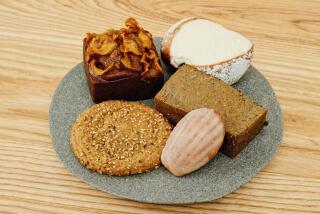The secret history of makgeolli, the Korean alcohol with a yogurt-tart taste
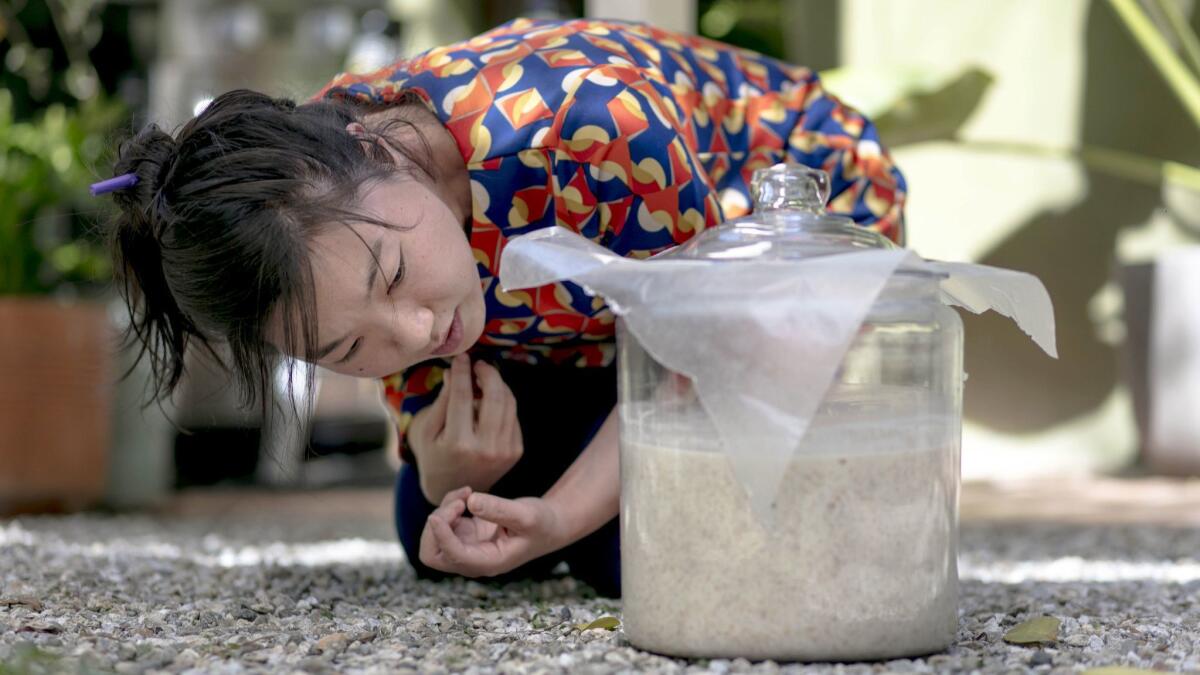
- Share via
You might be familiar with green-glass bottles of soju from long nights out in Koreatown, or maybe you’ve ventured further afield and enjoyed some plastic bottles of fizzy white makgeolli at the same places.
But, despite their ubiquity, these modern incarnations of Korean rice brews are about as representative of Korean booze as wine coolers are of European viticulture: good cheap fun, but not nearly the whole story. There’s an old saying in Korea: “To know the politics of a village, taste their alcohol.” It harks back to an era when brewing was a resource-intensive luxury: If your village had good alcohol, it was a pretty good sign of peace and plenty.
A few weeks ago, I stood in chef Susan Yoon’s sunny Mount Washington kitchen, cutting cheesecloth for an enormous steamer, while my friend Yong Ha Jeong weighed out kilos of uncooked sticky rice next to me. We’d gathered a little group of Korean American friends to eat, drink and brew makgeolli, a yogurt-tart cloudy rice beer that Koreans have been drinking for centuries. The practice of making it at home was derailed in the last century, but a new generation of Koreans, both on the peninsula and in diaspora, are reclaiming old traditions.
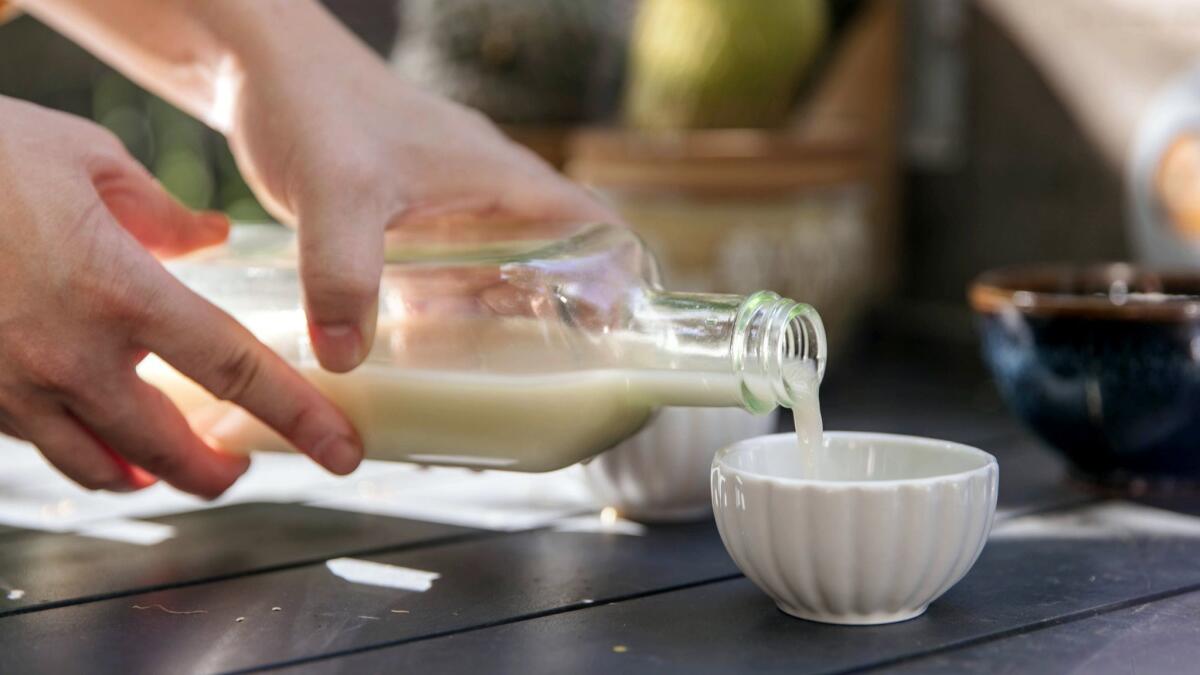
Makgeolli is one drink in a family of Korean rice brews that can all be made by roughly the same process: Steam rice, mix it with water and nuruk, a wheat cake fermentation starter, and let the microbes go to work. Makgeolli falls under the umbrella of takju, the cloudy rice beer you get when you first strain your mash; the results have a creamy, horchata-esque mouthfeel. Filter out those clouds and you get yakju, a golden-amber “wine” that can range from cloyingly sweet and dense to green apple-tart and fizzy. And when you distill yakju, you end up with the fiery-bright, clear liquid known as soju.
But for most of the last century, brewing Korean alcohol with rice was banned, in one form or another, a casualty of the peninsula’s turbulent history. It started with the gradual takeover of the Joseon Dynasty by the Japanese Empire at the beginning of the 20th century. By 1934, home-brewing was banned outright. Brewing was moved to factories and taxed, becoming a source of revenue for the expanding empire.
By 1965, the Park Chung-hee dictatorship banned the use of rice in alcohol production because of war, hunger and rice shortages. But hard times never stopped people from drinking; the opposite is often truer. Instead, soju makers looked for the cheapest sources of starch they could find, distilling tapioca and sweet potatoes up to Everclear levels of alcohol content, then watering it down and adding sweeteners. This is pretty much how green-bottle soju is made today, and why it’s almost never made with rice.
Makgeolli, meanwhile, was brewed using wheat from American food aid. Makgeolli expert Jisung Chun points out that the U.S. had excess wheat going bad in warehouses, “so it’s like, hey, kill two birds with one stone.” Most cheap makgeolli today is still brewed using wheat, and it’s the sweeter, denser flavors of wheat makgeolli that evoke nostalgia in older Koreans.
Throughout all this, women still brewed in secret. Before colonization, brewing was women’s work: Washing, soaking and steaming the rice, then shepherding it along to boozy completion was a duty they undertook along with the fermentation of soybean pastes, soy sauces, kimchi, and other pickled and preserved vegetables. And it remained so through the last century, though behind closed doors.
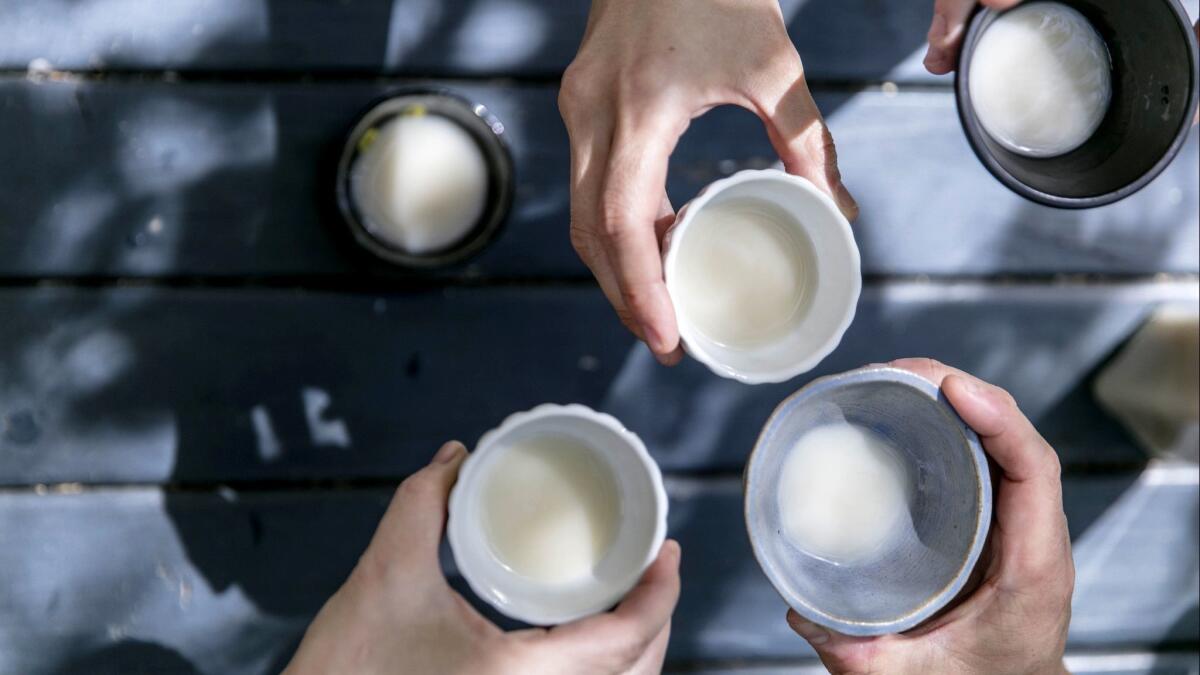
My mother remembers a neighbor woman in Gunsan, a West Coast port city, who doled out yakju in secret from her kitchen, bribing the police every so often to look the other way. Yong Ha said her grandmother also ran an informal brewpub on her farm in Chungcheong province, making black market makgeolli to supplement her income and feed the family. It wasn’t until 1990 that the South Korean government lifted the ban on brewing with rice, and home-brewing was legalized just over 20 years ago. The Korean market is still dominated by beer and industrial soju, but small artisanal brewers and distillers are popping up, and home-brewing is gaining in popularity: Celebrities are getting their hands on some home brew on morning TV talk shows, and YouTube chef Maangchi has a recipe for makgeolli in her bestselling cookbook.
Part of the reason why home-brewing Korean alcohol is so accessible is because it’s so forgiving — no need for a sterile laboratory. The key is nuruk, the defining feature of Korean alcohol. It’s a fermentation starter usually made of wheat, but sometimes also mung beans, barley and rice. Nuruk is the product of wild fermentation, collecting whatever yeasts and bacteria are local to where it’s being made. Once the right microbes get going, the nuruk is dried and stored. When it’s time to brew, nuruk’s bacteria and yeasts and molds work in tandem: Enzymes from the molds, often including aspergillus and rhizopus species, break down the rice starches into sugars, which the yeasts then turn into alcohol; the bacteria produce lip-smacking acids. Much like natural wines, the product is variable and funky.
“The chance and improvisation aspect is so alluring,” Yong Ha wrote to me recently. “Korean alcohol doesn’t aim to be precise and perfect; it seduces.”
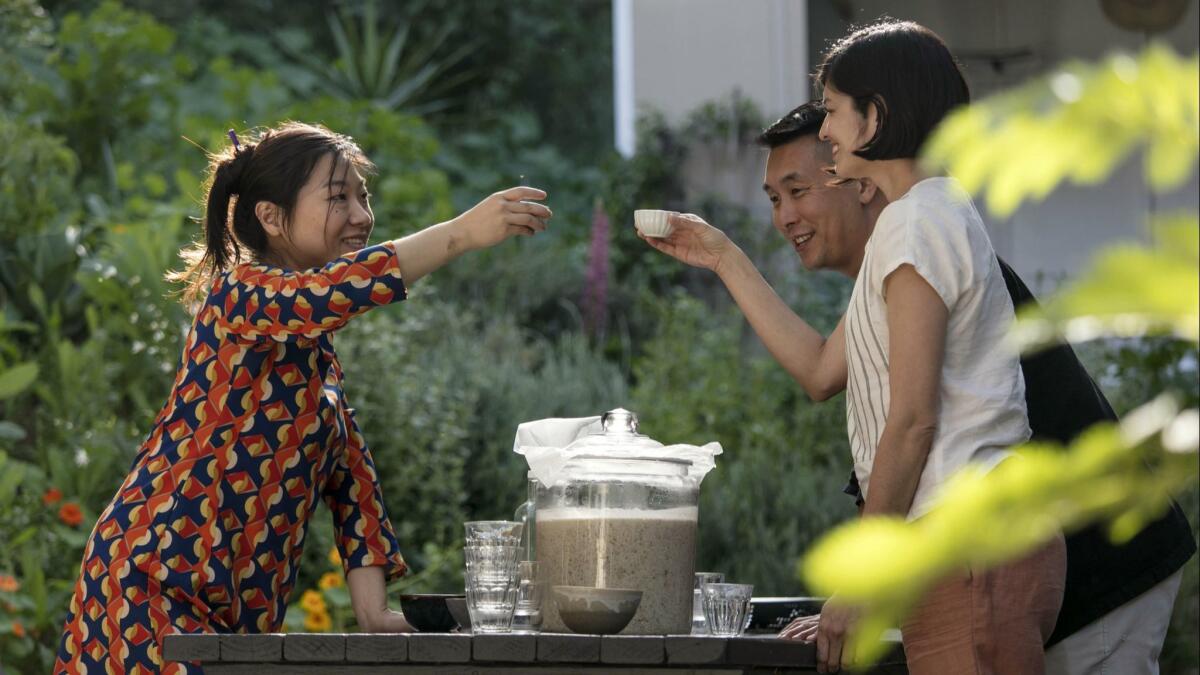
Back at Susan’s kitchen, it struck me, looking around at the huge windows and the rice cooling in front of an open side door, that what we are doing would have been illegal in our grandmothers’ generation. The fact that so few of us know how to brew and what home-brewed Korean alcohol even tastes like, decades after the end of colonization, is a sign of how efficiently commercialization took that knowledge out of our hands and put it into the factories. I am reminded of what food writer Alicia Kennedy wrote: “The commercialism of food removes us from our culture.” She was talking about tortillas, but it resonated.
With our baby brews put to rest in jars and containers, it was finally time to feast. Yong Ha brought out chilled bottles of her homemade takju, I set a bottle of yakju from Korea on the table, and Susan piled crispy, hot kimchi and mungbean jeon — savory pancakes — onto a platter. Jeon and takju is a classic pairing, especially on rainy days, as the sizzle of jeon is said to mimic the patter of raindrops.
When drinking makgeolli in its watered-down form, closer to 5% or 6% alcohol by volume, we like to serve it in rice bowls, often metal, and drink it quickly. Takju or yakju that’s closer to 10% or 12% ABV we’ll pour into daintier vessels, shallow bowls that you sip from. Then Yong Ha pulls a homemade soju from her bag, and the afternoon stretches into early evening. By the time we’re comparing Asian glows, there’s nothing dainty about the drinking.
More to Read
Eat your way across L.A.
Get our weekly Tasting Notes newsletter for reviews, news and more.
You may occasionally receive promotional content from the Los Angeles Times.


